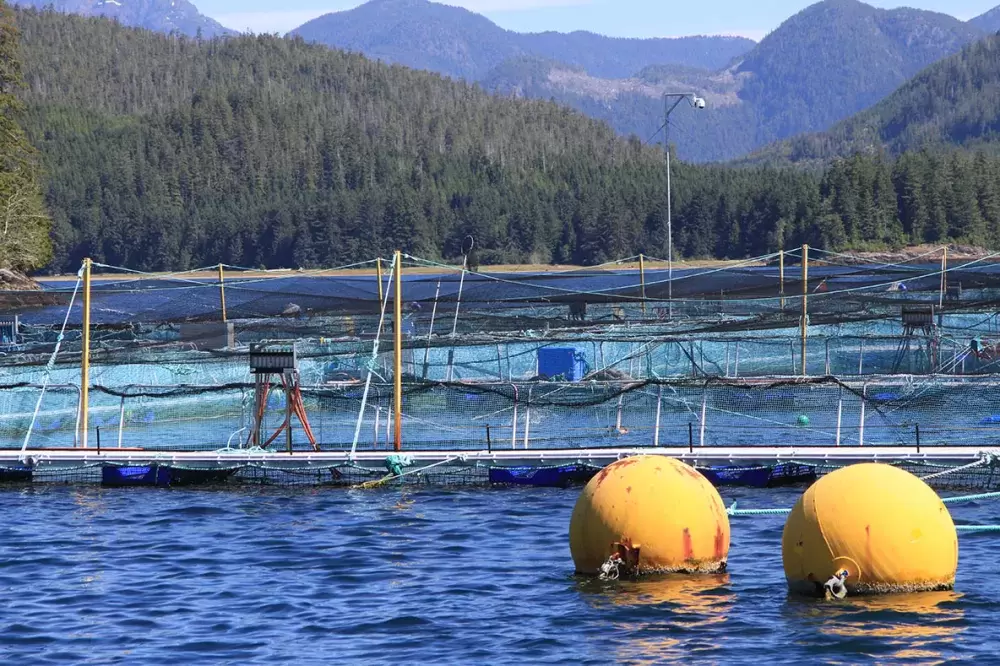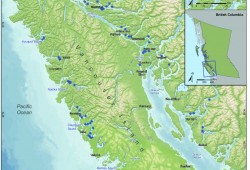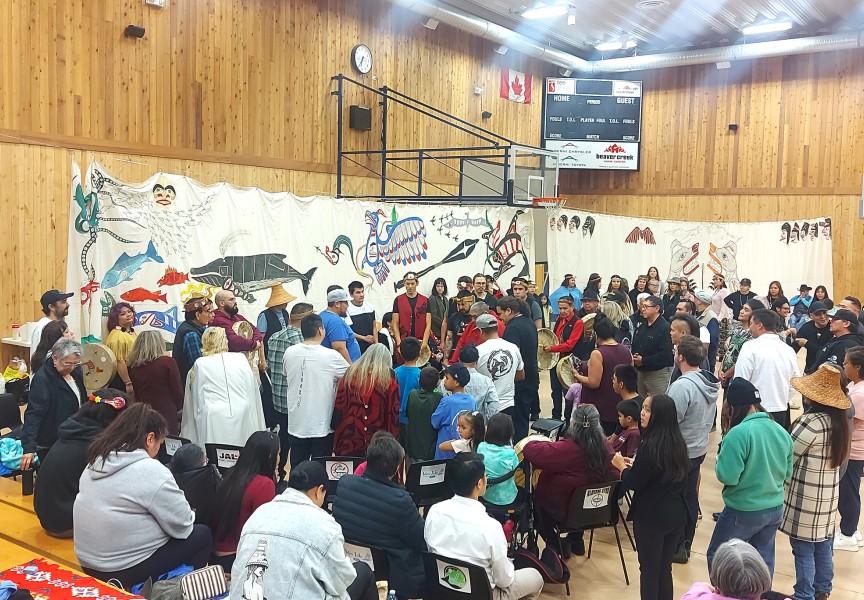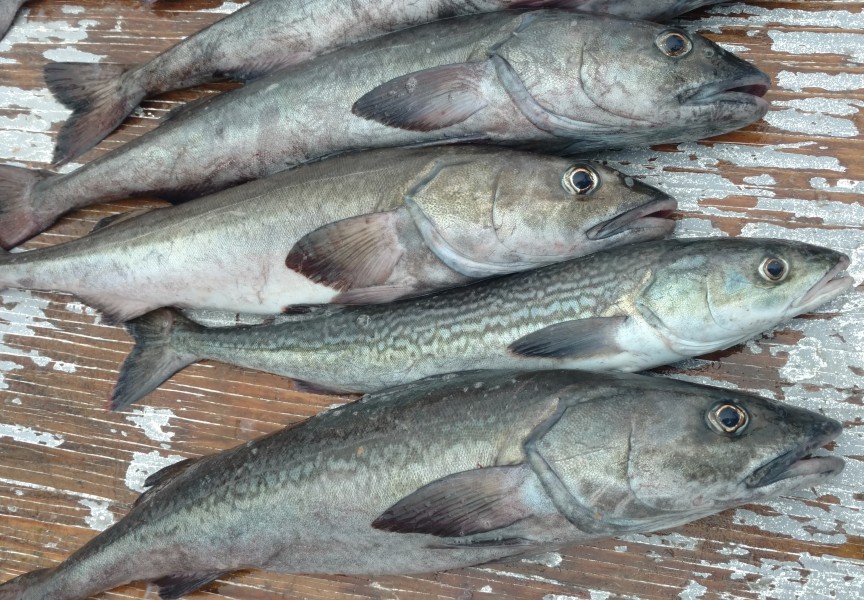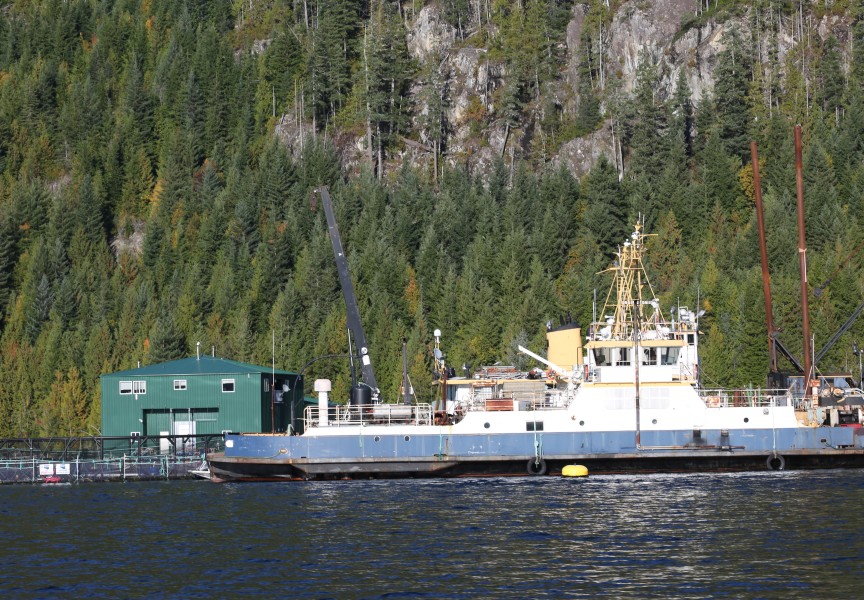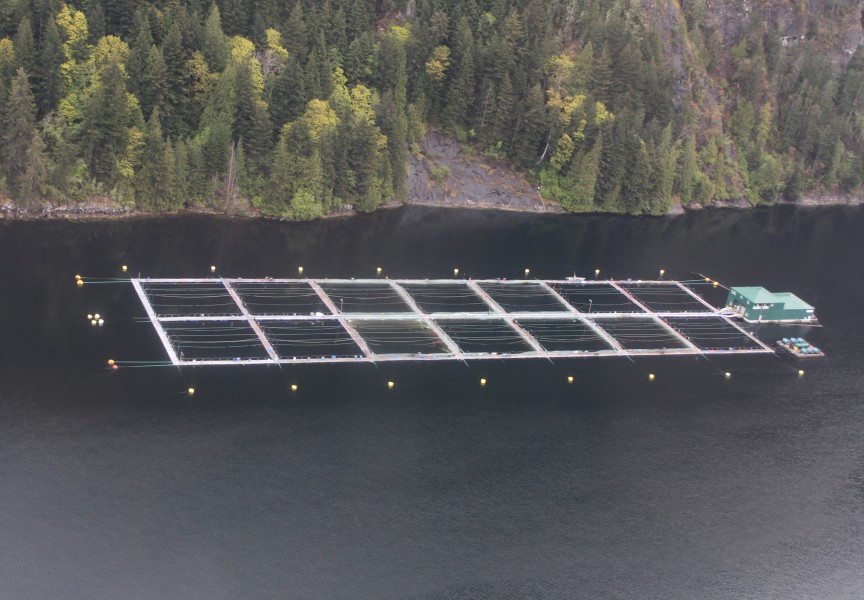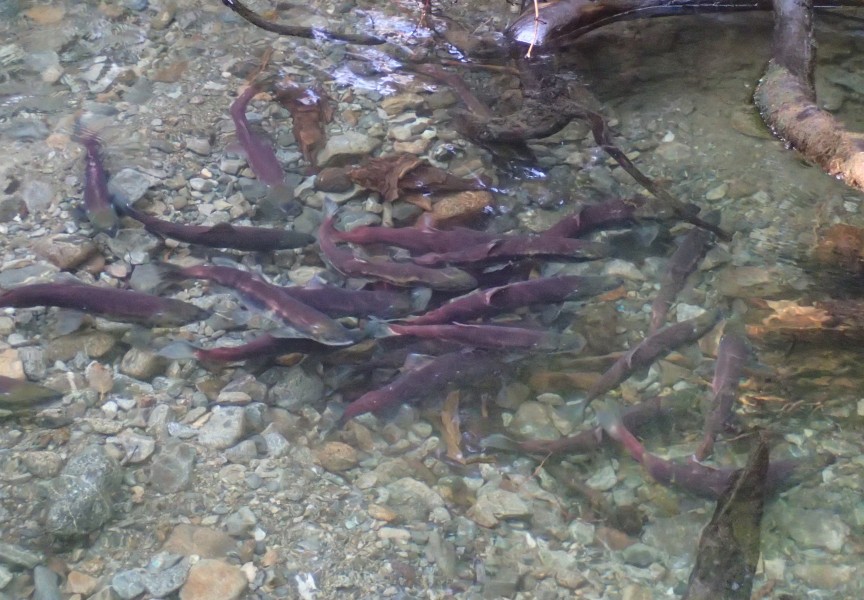Getting open net-pen fish farms out of the ocean appears to be more complicated than it sounded when this plan was promised by the Liberals in last fall’s federal election.
This year Fisheries and Oceans Canada is consulting with First Nations across B.C., a mosaic of coastal communities with diverse connections to the controversial industry.
In the 2021 federal election Justin Trudeau’s Liberals retained its minority government under a platform that included a pledge to remove the commonly used net pens out of the Pacific by 2025. In December Trudeau’s mandate letter to newly appointed Fisheries Minister Joyce Murray specified the assignment to work with the provincial government and First Nations to hammer out “a responsible plan to transition from open net-pen salmon farming in coastal British Columbia by 2025”.
But now it appears that only a plan could be in place by 2025, and movement can come later, explained Jared Dick, a Southern Region biologist with Uu-a-thluk who also sits on an aquaculture committee with the First Nations Fisheries Council.
“In all seriousness, this could be a plan they present in 2025 that may be a 10-plus year phase-out plan,” said Dick on Feb. 9 to the Nuu-chah-nulth Council of Ha’wiih Forum on Fisheries. “Right now they’re just starting to engage First Nations.”
For years many have called for salmon farms to be removed from the ocean out of concern that sea lice and other pathogens are transferring from net pens to the threatened wild stocks that migrate by.
But at stake is a growing industry that contributes $1.5 billion to B.C.’s economy annually, supported by an estimated 7,000 jobs that are directly or indirectly connected to salmon farming, according to the B.C. Salmon Farmers Association. The organization has reported that three quarters of the salmon harvested in the province come from fish farms.
As commercial fisheries continue to thin amid collapsing salmon stocks, many First Nations have taken a stake in fish farming through agreements with the companies that operate in their territories. Now some of these Indigenous communities aren’t keen to have the game changed on them due to a federal directive, explained Dick.
“Some nations have expressed that this DFO-mandated transition plan isn’t for the best of their nation,” he said. “That has been discussed at great length at these tables. There is discussion about maybe the nations have a right to keep these farms in their territories with existing or enhanced agreements.”
Meanwhile an aquaculture act is being prepared for Parliament – legislation that many believe is long overdue for an industry that is expected to grow at a rate of 4.2 per cent a year.
“When industry breaks rules there isn’t really very much penalty,” said Dick. “Some of the positives that can come from the aquaculture act are more clear direction, rules and policies. One example is there can be more severe repercussions, including financial repercussions, for the fish farm industry when they don’t follow their conditions of licences.”
On the second day of the Council of Ha’wiih Forum a large contingent from DFO was available in the online meeting, including Stella Kim, the department’s national manager of aquaculture policy and regulatory affairs. She noted that in 2018 the Commissioner of the Environment and Sustainable Development found that DFO failed to assess the effectiveness of its rules on giving drugs and pesticides to farmed salmon - a shortcoming that could miss how these treatments are affecting wild stocks.
Currently the DFO is developing new monitoring guidelines for drugs, pesticides, antibiotics and disinfectants, a framework that will fall under the new fisheries act.
“Industry will have to seek permission prior to the deposit of any drugs and, or pesticides,” said Kim.
A big point of contention has been the prevalence of sea lice in farmed fish. In 2018 Dick found high numbers of lice in wild salmon as outbreaks occurred at nearby fish farms in Clayoquot Sound.
“We captured the wild juvenile salmon, they had lots of sea lice,” said Dick. “There is a direct link to these negative sorts of interactions.”
Some nations have been involved in imposing tighter restrictions beyond the current industry standard. For example, Ahousaht and Cermaq have lowered the regulated threshold of three lice per salmon to 1.5 for farms in the First Nation’s territory. This applies to the period of salmon outmigration, running from February to the end of July.
During the forum Ahousaht’s fisheries manager Luke Swan noted the challenge of keeping a stake in the industry while meeting the needs of his community.
“Wild salmon is our No. 1 priority; it’s our way of life,” said Swan. “I hear it in Ahousaht too from our people. We’re trying to make two things work together. It’s hard.”
In the near future, 109 marine finfish licences in B.C. are due to expire this year, most running out on June 30. As of July, all of these tenures require approval of the local First Nation to continue to operate in its territory and gain a licence from provincial regulators.
“This has gone from the word that we all hate, consultation, to consent,” said Dick. “The province and industry now require the nations’ consent to operate in their territory.”
But this development in itself can be problematic for certain First Nations that rely on the migrating salmon that pass by farms in another other nation’s territory.
“Our salmon have to swim past all those farms, and they’re impacting us,” said Andrew Jackson, fisheries manager for the Tla-o-qui-aht First Nation. “They’re not in our territory, but they have an impact on our salmon.”
How exactly the industry will be able to transition from the current practice of ocean-based salmon farming remains to be seen. This winter Grieg Seafood introduced semi-closed containment systems to all three of its farms in Esperanza Inlet. This technology allows pen barriers to be lowered during periods of salmon migration, control that drastically reduces the risk of transferring sea lice between farmed and wild stocks, states the company.
Raising Sablefish – or black cod – is another approach that could help the transition from net-pen salmon farming. Currently Gindara Sablefish operates farms in Kyuquot Sound, territory of the Ka:'yu:'k't'h'/Che:k'tles7et'h' First Nations.
“There is discussion about transitioning to open net-pen farming of sablefish,” said Dick. “That alleviates a lot of the concerns about the pathogens spreading to our wild salmon.”
As the consultation process unfolds, Amy Marr, DFO’s regional manager with the net pen transition team, admitted that meeting the needs of each individual First Nation will be challenging.
“It’s going to be tricky discussions because of the diversity of views, but that’s something we’ll have to go through in the next few months,” she said.

